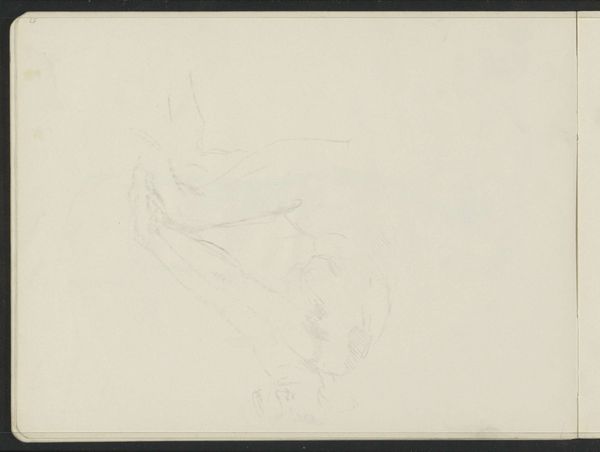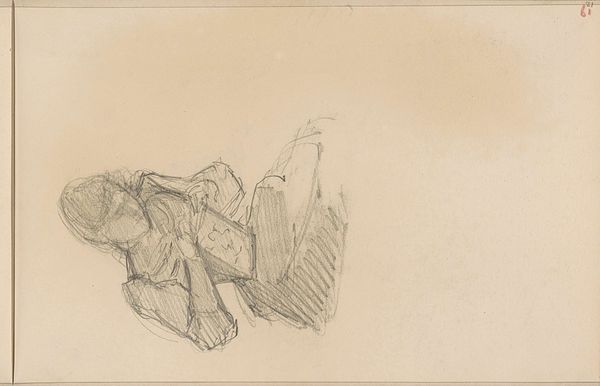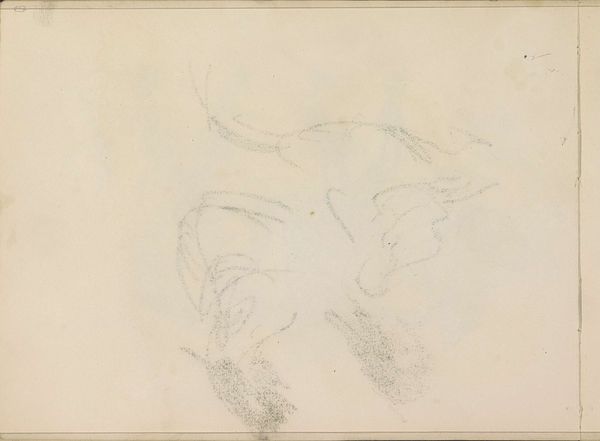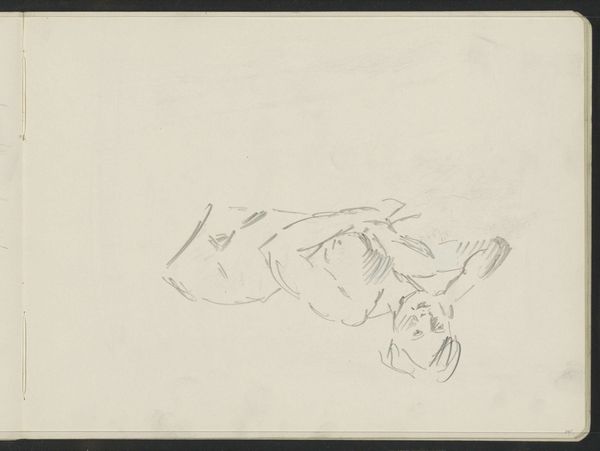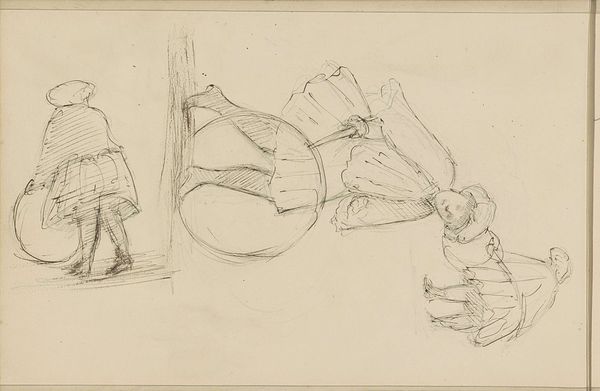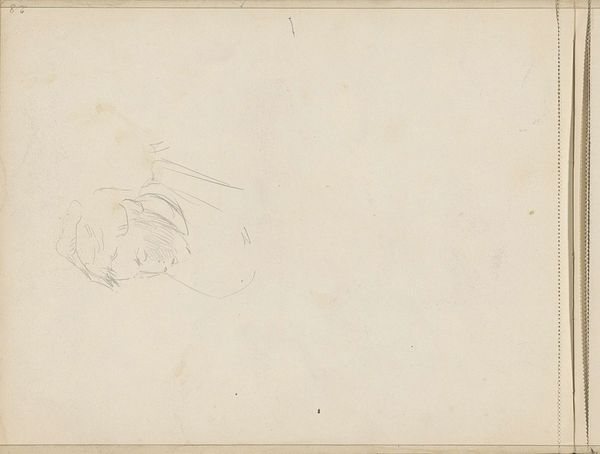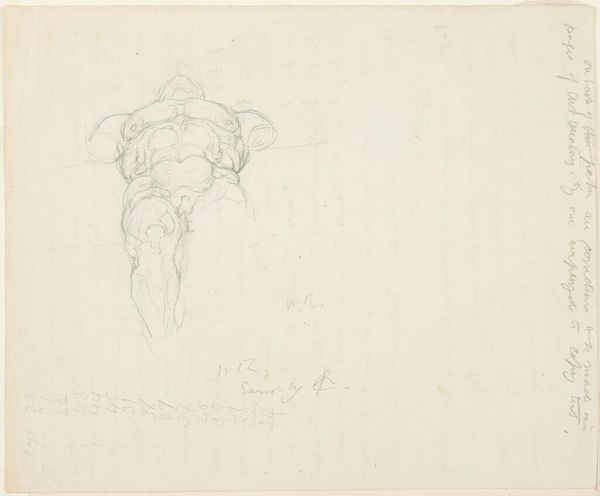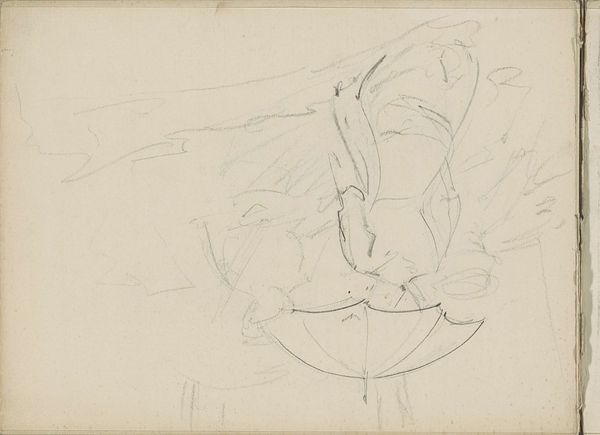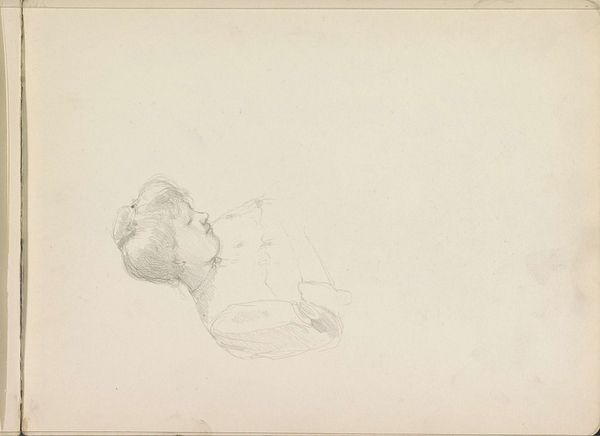
drawing, pencil
#
portrait
#
drawing
#
pencil sketch
#
etching
#
figuration
#
pencil
Copyright: Rijks Museum: Open Domain
Curator: Welcome. Today, we'll be discussing "Groep zittende figuren naast een staande figuur," or "Group of Seated Figures Beside a Standing Figure," a pencil drawing created sometime between 1865 and 1913. It is currently held in the collection of the Rijksmuseum. Editor: The immediate feeling it gives me is one of tentative exploration, of capturing fleeting moments and relationships between people who perhaps find themselves in difficult social positions. It feels incomplete. Curator: Indeed, it presents as a sketch, but I appreciate how Bramine Hubrecht employed subtle variations in line weight to suggest form and space, even without fully defining it. Note how the interlocking shapes create a closed composition. Editor: I’m more intrigued by what isn’t there. These figures seem lost in shadows, their identities obscured. Who are these people, and what might their relationships be beyond this aesthetic study? Are these women defined by restrictive societal norms and class structures, unable to move beyond the expectation of maintaining conservative social circles? Curator: One could certainly interpret the postures of the figures in that way, yet I think it's more about the play of light and shadow. I see, structurally, how the single standing figure counterbalances the cluster of seated forms, thereby reinforcing the work’s internal dynamism. Editor: To view it as a formal exercise feels like a disservice. The almost ghost-like quality suggests the fragility of social bonds, of women being rendered invisible by a patriarchal society. If you were to situate these figures as such, how might that standing woman be viewed, given her slight isolation from the cluster, especially with the compositional elements of light, which seems to elude them? Curator: I think what makes the work compelling is how it resists a singular narrative. You read social constraint; I see a visual study with well-balanced compositional concerns that support art as art. Editor: Well, regardless, perhaps its unfinished quality and its seeming fragility encourages us to reflect upon the impermanence of societal expectations and to consider the individuals obscured by those expectations. Curator: For me, the subtle skill in execution invites reflection on artistic intention and careful planning despite its unfinished status.
Comments
No comments
Be the first to comment and join the conversation on the ultimate creative platform.
